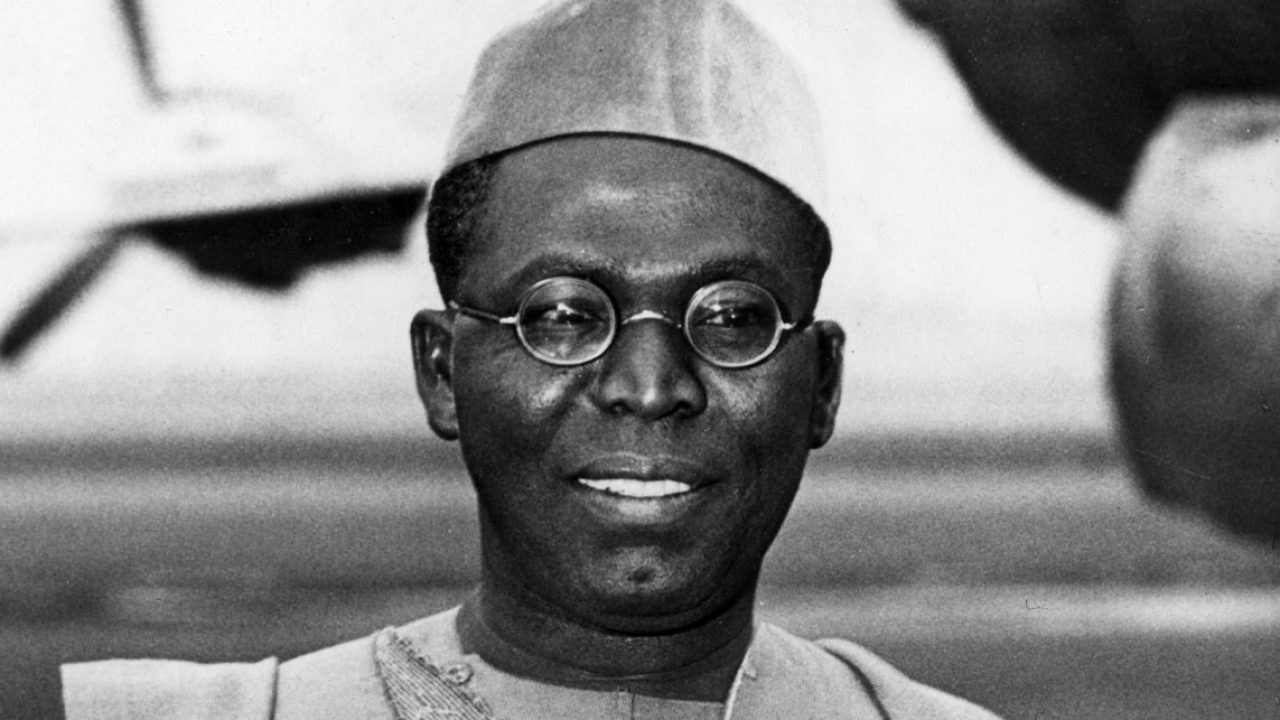THE beauty of Chinese modernisation lies in the long term poverty alleviation strategy driven by sustained fast economic growth, which played a key role in rural reforms, agricultural development, labour-intensive manufacturing and employment, urbanization and rural-urban migration.
While Chinese Modernization has remained a global socio-economic role model to several countries, experts believed that it would have been practically impossible to talk about Chinese modernization and the phenomenal poverty reduction without mentioning the impressive and development–driven reforms that were initiated by the Communist Party of China (CPC).
Over the past 75 years of its history, China was said to have lifted over 800 million people out of extreme poverty – a feat that was historically unprecedented and documented for accounting for about 75 per cent of global poverty reduction between 1981 and 2020.
This attainment was achieved through decades of speedy economic growth and comprehensive reforms, which began in the late 1970s. With its attendant improvement in living standards, developed infrastructure and increased incomes, China was able to meet the goals of the UN’s 2030 Agenda for Sustainable Development by 2021, a decade earlier than the target year.
This development best defines ‘Chinese modernization’ – the political will of Chinese government to transform the economy, the society and the mode of governance for national rejuvenation and prosperity. Thus, the CPC government resolved to vigorously pursue economic reconstruction, high-quality development with focus on innovations, sustainability and efficiency-driven growth.
Chinese modernization equally involves technological advancements and global economic influence; which China obviously flourishes across the globe.
Through its modernization process, the living standard of its citizens have been enhanced with glaring reforms in education and healthcare. Meanwhile, a comprehensive social safety net, social services, state capacity strengthening, transparent legal system and promotion of traditional Chinese culture alongside modern values, were entrenched as national norms.
Consequently, different countries of the world, including Nigeria, seek to adopt the Chinese modernization model for accelerated development. The country’s ability to transform from extreme poverty to socio-economic stability built on the foundational principle and philosophical ideology that it is only through the empowerment of citizens for future self-reliance that a country can be better, has become a reference point for developing nations of the world.
While people wonder about the secret of Chinese success, history credited the poverty reduction prowess to two major pillars – Broad-based Economic Transformation, and Targeted Support for Areas and Households Disadvantaged by Geography and Lack of Opportunities.
By these, the government focused on national development policies with poverty reduction as a defining purpose, and through it, the government was able to deliver a well-targeted programs for the poor in an inclusive manner, that guaranteed balanced development between rural and urban areas – a holistic strategy of growth backed by political will.
In his presentation titled, ‘The War Against Poverty and the People Centered Accurate Poverty Alleviation, Mr. Wang Sangui of China Anti-Poverty Research Institute, Renmin University, China (RUC), stated that between 1981 and 2015, China’s poverty rate decreased from 88 per cent to less than one per cent, based on the percentage of people living on the equivalent of $1.90 or less per day. The per-capita income was also recorded to rise from $200 in 1990 to $1,000 in 2000, and to $5,000 in 2010, moving China from a low-income country to a middle-income country.”
The Chinese modernization project was so consistent and resilient that in 2018, the number of people living below the national poverty line of ¥2,300 per year was 16.6 million, which is less than two per cent of the population and by 2020, China proudly announced eradication of absolute poverty, having successfully lifted over 800 million people out of poverty.
Since then, the country has remained committed to sustained growth and substantial increase in living standards.
A major striking lesson was the Accurately Targeted Poverty Alleviation approach initiated by President Xi Jinping during his visit to Western Hunan in November 2013. The policy stipulated that poverty alleviation should be practical and realistic, and it directly aimed at helping the poor by targeting poor households and poor people.
To implement this policy, Chinese government did not adopt or shout any slogan or set ambitious goals. Rather, it documented public opinions on innovative mechanisms that solidly promoted rural poverty alleviation and development.
In fact, this is the basic strategy in the war against poverty because through accurate identification, assistance, management and assessment of poor households and villages, government guided meticulously, the optimal allocation of various poverty alleviation resources, and with this, the country achieved poverty alleviation from village to household, and gradually built a long-term mechanism for targeted poverty alleviation.
The process began with identifying and registering the poor. Consequently, all families, whose income was lower than the poverty line and could not meet the ‘Two Assurances and Three Guarantees’ (adequate food and clothing, and access to compulsory education, basic medical services and safe housing for impoverished rural residents) were identified and registered through quantitative identification and controlled democratic appraisal to reduce omissions.
At the end of the exercise, China identified 29.48 million poor households with a total population of 89.62 million in 2013. The ability to register all the poor households and population with accurate details about each family, its available resources, income sources and reasons of poverty, was laudable and worthy of emulation.
Under the second strategy which was ‘Precision Poverty Alleviation Strategy’, the government intensified promotion of income-generation activities, including cooperative agricultural production, value chain development as well as rural tourism development that target the poor. Additionally, interest-free loans were provided for poor households. No wonder China has become a preferred destination for most people across the globe.
For African leaders, China remained a role model for youth empowerment and job creation – providing skill training, subsidized transportation cost, job market information and assisting the poor through medical and health services. Government’s provision of a comprehensive coverage and differentiated subsidies of basic medical insurance – serious illness insurance and serious illness relief without demand for deposit, speak volume of sustainable reforms.
As many developing countries of the world wallow under food insecurity, China succeeded in achieving food security because it understood the power of providing the backward integration for heavy industries as well as exploiting every single layer of the value supply chain. It doesn’t believe in weaponisation of poverty for political sentiment.
However, another striking and interesting aspect of Chinese modernization was captured vividly by President Xi Jinping in his Keynote Address at the opening ceremony of the Third Belt and Road Forum for International Cooperation in 2023. He made it clear that China was endeavoring to build itself into a stronger country and rejuvenate the Chinese nation on all fronts by pursuing Chinese modernization, which was not self-serving but for all developing countries of the world.
He however declared that the modernization China was pursuing was not personal but for all developing countries through joint efforts. He believed that global modernization should be pursued to enhance peaceful development and mutually beneficial cooperation and bring prosperity to all.
He assured of China’s willingness to work with all parties to deepen Belt and Road partnerships of cooperation, usher the cooperation into a new stage of high-quality development, and make relentless efforts to achieve modernization for all countries.
Since the beginning of the reform that herald the opening up of China, the government has canvassed a world where development is even, peace inevitable and the future, where the world is a community where every player is a winner.
In all that China has achieved and is still achieving, credit must be given to its government for entrenching strong institutions. Otherwise, even noble ideas and policies would have been futile.
Through strong institutions, the government enforced policies in every sector of the economy. In agriculture and food security, it eliminated the systemic obstacles to farmers’ land ownership and consequently, rural infrastructure improved, while education and healthcare services also thrived.
The fact that poverty reduction in China accelerated over time was an indication that the strategy of taking tailor-made measures against poverty is successful and effective, and should be emulated by other developing countries burdened by poverty.
Beyond the immediate environment, China’s eradication of extreme poverty has global benefits, having contributed to the world achieving the Millennium Development Goals set for 2015. China by that, attained the first UN Sustainable Development Goal target 1.1. of eradicating extreme poverty ten years ahead of schedule, and undeniable fact remains that ever since the reform began, the pace of poverty reduction in China has been consistently faster than anywhere across the globe.
Okwuokei, an Agricultural Engineer writes from Port Harcourt






